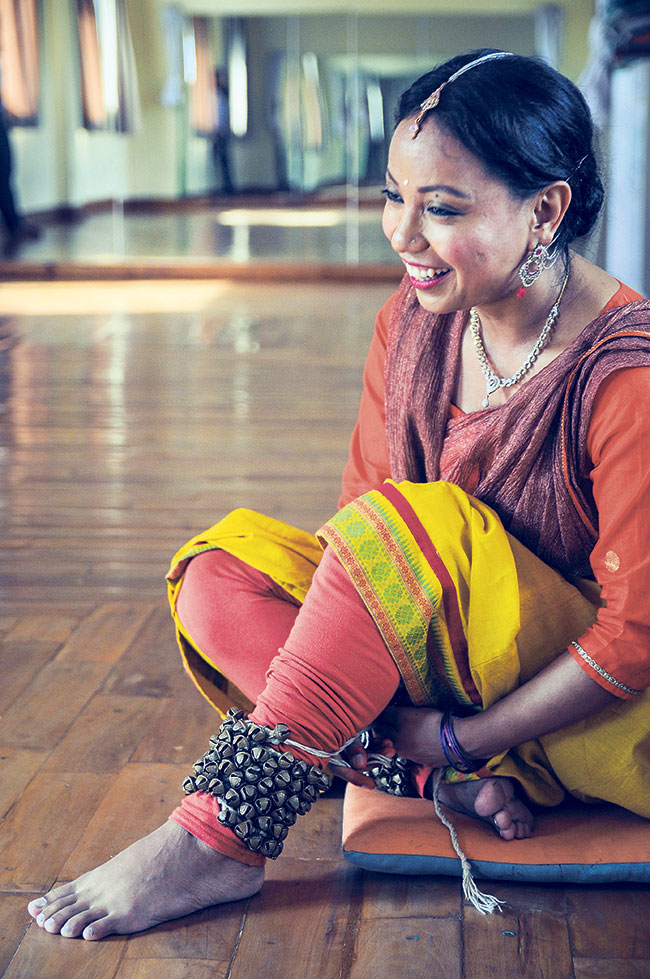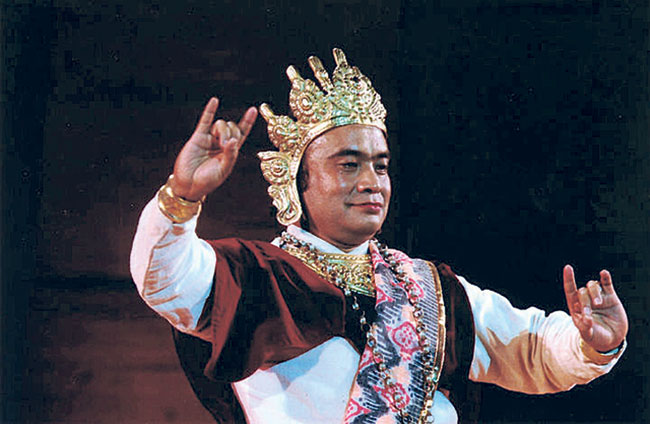
Subima Shrestha
Kathak artist
She may be a classical Kathak dancer, but Shrestha cites Krumping, an aggressive form of hip hop dancing, as her other favorite form of dancing. It’s with this open attitude that she has been moving forward as a dancer. “I love collaboration,” she says. Be it hip hop, flamenco or most recently at The Innovation in Education Fair with storytelling, Shrestha in her own ways is trying to bring a new flair to her form of dance.
As she puts it, “I believe and also say all the time that once you learn and know your art, it becomes yours as well. We have the freedom to interpret it in your own way.”
And best believe she has paid her dues. It took eight years of dancing every day to graduate from her Kathak School in India. She is also well familiar with the strict discipline of the dance. After all, she was groomed in it. But it is also clear that she managed to maintain her own perspective throughout the process.
I believe and also say all the time that once you learn and know your art, it becomes yours as well. We have the freedom to interpret it in your own way.
Her goal these days is apparently to bridge the gap with Kathak and its audience here in Nepal. Though there have been Nepali Kathak dancers before here and the dance continues to be taught in colleges and workshops, the interest among the masses is yet to be peaked.
So with her own classes at Nritya Aagan and Srijana Art College, she is trying to do her little bit. “All the dances pay attention to their movements, timing and choreography but there is something special about Kathak. I have never seen somebody play with rhythm as well as a Kathak dancer,” says Shrestha.
Even now, after eight years of studying and seven years of teaching, she claims to be in awe of the ability of some of the more prolific Kathak dancers. Their sense of musicality, she repeats, is unlike any other dancers. “They pick up a rhythm and pull out completely different rhythm from it. They are master manipulators.”
Though on the first day of her new sessions, Shrestha shares that she always warns her students and sometimes even their parents that the classes won’t always be fun. The truth is it’s rigorous. She explains that it is almost like math. The aim is to develop a sense of rhythm to ride them. For this, a dancer will have to develop the ability to calculate the beats and change them on the spot with their movements. It is a challenge but those who dare clearly consider it to be one worth pursuing.
Rajendra Shrestha
Charya artist
Dancing on his toes

Shrestha has been touring and staging solo performances at universities, museums, monasteries, and art festivals in Asia, Europe and North America since the early 1980s. All the experience has made him a dancer with strong opinions. If you are having a conversation with him, you need to be alert. The talks may begin with postures, dance movements, and amphitheatres but they just as quickly may turn to history, culture, and politics as well. It’s a constant stream of thoughts and yes, he might come off as harsh. Shrestha acknowledges it too. But, where his dance is concerned, he fiercely defends his stance.
He is not too pleased with traditional dancers, Charya dancers in particular, trying to make the art consumer friendly. “You can’t fuse the different rudras and the movements, this dance isn’t about providing entertainment,” he says.
Shrestha is a purist and you can see that his complains are from a good place. Despite the wide recognition among the national and international dance community, Shrestha lives a modest life alone in his Kupundole flat.
He pulls out a metal trunk and, from it, systematically pulls out his dance costumes and jewelries. He starts explaining about them. The frown has disappeared. Whenever he is talking about his dance, he seems to be in his happy place.
The history of Charya or Chacha dance in Nepal can be traced back to the sixth century. Many cultural notes and literature mention them as prayers and praises for the Gods.
Shrestha too shares that it was his devotion for the deities and his interest in spirituality that got him to the dance classes. Apparently, even at 16, he used to participate in bhajans, then one day, he learned that Lord Shiva thoroughly enjoyed dance performances. So learning Charya dance was his way of expressing his devotion.
But, back then, Charya dance wasn’t viewed in a good light like today. According to Shrestha, he didn’t have a supportive environment. Still, he explains that the more he danced, the more intrigued he became. In fact, he believes his success lies in the fact that he didn’t just learn the dance moves. He was curious about movement and their purpose. He asked around, gathered information, researched and built his performances from it.
Shrestha has been known to ask his audience to mediate before he officially begins his performance. Again, he stresses, Charya dance isn’t just mere entertainment. Charya dance is a form of moving meditation, a spiritual transformation. The movement depicts various rituals and narrates stories of devotions.
Shrestha elaborates, “When the music plays, it sends this vibration throughout my body. Whenever I dance, I feel a unique energy. In its deceptively subtle ways, it expresses some overwhelming feelings.”
Charya dance isn’t just mere entertainment. Charya dance is a form of moving meditation, a spiritual transformation. The movement depicts various rituals and narrates stories of devotions.
According to him, he doesn’t have much of a presence in his daily life. “I don’t turn heads when I talk or enter a room,” he admits. But on stage, he says, he has “a certain aura.” Apparently, he reached the conclusion because many people kept telling him.
Now the purpose for him is to help preserve the art of this dance but he also quickly adds that he wants to do it the right way. As an example, he reveals he was asked to stage a dinner performance for Modi’s visit. But he refused to do so. “A dining hall isn’t a place for Charya dance.”

Pinky Sapkota
Belly dancer
Like is the case around the world, it might have been Shakira who introduced the form of belly dancing to majority of Nepalis but it’s dancers like Sapkota who is helping the art take off in our country as well. As one would expect, there is a lot of twists and shimmy happening in the class, but, for her personally, there is more to the dance.
To begin with there aren’t any prerequisites to joining Sapkota’s belly dance classes. Contrary to popular belief, your age (her oldest student was in her mid 60s) and your size don’t matter.
You can feel a distinct sense of pride in Sapkota as she explains all of this about her dance. “Belly dancing is all about empowering yourself. There are no criteria as to who is eligible and who isn’t. Anybody can join in.”
And so they have been doing so. Sapkota herself apparently decided to build her career in belly dancing because of the way it made her feel. She guarantees that the Pinky before taking up the classes was a completely different person. It’s this confidence that she wishes to give other women as well through the dance.
“When you are belly dancing, you are aware of every inch of your body and muscles. Since you have to use them, you can feel your own strength develop over time. Then there is the movement of the dance and the visual that make you feel incredibly empowered.”
Belly dancing is all about empowering yourself. There are no criteria as to who is eligible and who isn’t. Anybody can join in.
This, she says, has been the case ever since she started learning the dance form. After becoming part of Meher Malik’s famous Banjara School of Dance, the feeling apparently only became stronger. Now she is here to kick of her own individual journey with her dance.

She insists on making her classes a two-hour session. The first 45 minutes is solely for warm ups and only then does traditional Arabic inspired music begins. Sapkota shares that most her students expect Hindi or English songs but her classes are true to its belly-dancing roots.
Many experts believe that belly dance is one of the oldest forms of dance that has deep origins. Sapkota had to study it all during her years at the Banjara School of Dance and she makes it a point to pass on the knowledge to her current students as well. Again, Sapkota reminds us, “The classes may have a lot twists and shimmy, but essence of the dance goes a lot deeper.”
Photos by: Pratik Rayamajhi







































